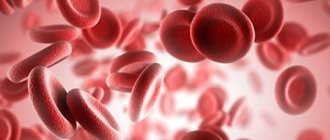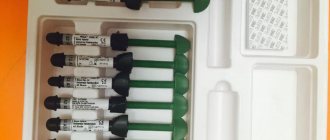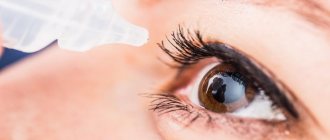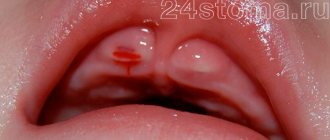Release form, composition
The drug Nimesil is available in a dosage form, a powder for the preparation of a suspension, which is intended for oral administration. It has a light green color, coarse grain, and an orange scent. The main active component of the drug is nimesulide, its content in 1 sachet of powder is 100 mg. The drug also contains additional compounds, which include:
- Sucrose.
- Orange flavor.
- Ketomacrogol.
- Anhydrous citric acid.
- Maltodextrin.
Nimesil powder is packaged in aluminum foil bags of 2 g each. A cardboard pack contains 9, 15 or 30 bags.
What are the similarities and what are the differences?
Nimesulide or Nimesil - are they the same thing or not? "Nimesil" and "Nimesulide" have a common active substance - nimisulide. Therefore, these drugs can be called identical. Medicines quickly and effectively eliminate pain, relieve inflammation and normalize body temperature.
However, there are some differences between the drugs, which play an important role when choosing a more suitable drug.
What is the difference between Nimesulide or Nimesil? The main difference between medications is the form of release:
- One of them is available only in granules.
- The second can be purchased in the form of gel, tablets and granules.
Indications for use also have some differences:
- Nimesil has a more limited list of indications.
- "Nimesil" has more side effects, and it must be taken within the strict limits of the prescribed dosage.
- In addition, Nimesulide has a wide list of restrictions on its use.
This must be taken into account when purchasing.
The most significant difference is the price:
- "Nimesil" can be bought for 200 rubles.
- The cost of "Nimesulide" is 60 rubles.
Most patients prefer the cheaper option.
The difference in price is due to the fact that Nimesulide is produced in Russia, and Nimesil in European countries.
pharmachologic effect
The main active ingredient of Nimesil is nimesulide, which is a sulfonamide. This substance suppresses the activity of cyclooxygenase-2 in the body, the enzyme responsible for the production of prostaglandins, which are synthesized during the development of pathological processes. A decrease in the amount of synthesized prostaglandins, as a result of exposure to nimeslin, helps to reduce irritation of nerve endings in the area of inflammation, which, in turn, leads to the disappearance of pain.
After entering the body, the drug begins to act actively. It is easily absorbed from the stomach and intestines, penetrates the blood, binding to plasma proteins. The largest amount of active substance in the blood is observed approximately 2-3 hours after taking the medicine. The main metabolic processes take place in the liver, and the resulting inactive products are eliminated within 6 hours (half-life).
According to research results, repeated use of the drug does not cause accumulation.
In the head and neck area, due to the peculiarities of the anatomical structure of the nerve plexuses, pain often occurs instantly. According to the definition from Collier's Encyclopedia, pain is an unpleasant sensation or suffering caused by irritation of specific nerve endings in damaged or already damaged tissues of the body. The biological significance of pain is that it serves as a warning signal and forces people to reduce physical activity during injury or illness, which facilitates the healing process.
All human inflammatory diseases, one way or another, are accompanied by pain. Among the main diseases of the oral cavity, periodontal diseases have held a leading position for many years. The main percentage of periodontal tissue pathology is due to inflammatory-destructive diseases, a smaller part is due to destructive periodontal pathology, such as recession. It is known that the cause of the development of periodontitis is the introduction of a number of pathogenic bacteria, which results in an inflammatory process that leads to the destruction of the supporting-retaining apparatus of the tooth. While the cause of recession is often a traumatic factor against the background of anatomical predispositions - a thin biotype of the gum and bone substrate. Incorrect movements of the brush when brushing teeth, bad habits and structural features of the soft tissues of the vestibule of the oral cavity can act as a traumatic factor [1, 2].
Since “treatment” is a system of measures aimed at restoring health, preventing complications of the disease and eliminating manifestations of the disease that are painful for the patient, the surgical stage is often the main one in an integrated approach to periodontal diseases.
Pain, tissue swelling, increased temperature of the damaged area - all this can occur at various stages of the course of inflammatory-destructive periodontal diseases. Often the above symptoms occur during an exacerbation of the disease, i.e. abscess formation. Then the inclusion of non-steroidal anti-inflammatory drugs (NSAIDs) in complex therapy is beyond doubt, while in the chronic course of the disease patients often do not present such complaints.
As mentioned above, the cause of recession often lies in the anatomical features of the structure of the soft tissues of the vestibule. Then, to prevent progression of gum loss and root exposure, laxative operations are recommended. Elimination of the traumatic effect of cords, for example frenulectomy or vestibuloplasty, is a fairly common operation. Direct surgical treatment of recessions themselves is also becoming increasingly popular, although it does not yet allow achieving lasting results, including aesthetic ones.
When performing any surgical intervention on the tissues of the maxillofacial area, and periodontal tissue in particular, the postoperative period is almost always accompanied by “side effects,” including pain. This is one of the indications for prescribing NSAIDs as symptomatic therapy in order to facilitate the processes of tissue repair and regeneration [3].
NSAIDs were discovered about 150 years ago and have since become widespread in medicine. The mechanism of action of NSAIDs is based on inhibition of cyclooxygenase (COX) synthesis. When tissue is damaged, be it mechanical impact or microbial invasion, a cascade of reactions develops in the body, as a result of which COX is activated, an enzyme that regulates the formation of prostaglandins (PG), mediators of edema, inflammation and pain. However, along with the positive properties of NSAIDs, side effects were soon discovered, such as reactions from the mucous membrane of the gastrointestinal tract, cardiovascular system, and kidneys.
Only after the discovery in the early 90s of the twentieth century of two isoforms of COX—structural (COX-1) and inducible enzyme (COX-2)—it became possible to explain the side effects on the body [5, 6].
The mechanism of nonselective COX inhibition is key to understanding the adverse effects that occur. It is the effect on both isoforms (COX-1 and COX-2) that is the risk of side effects, since COX-1, being a structural enzyme, regulates the production of PGs involved in ensuring the normal (physiological) functional activity of cells.
From the point of view of practical medicine, the most interesting among NSAIDs are modern drugs that can suppress predominantly COX-2, an enzyme involved in the synthesis of PG in the area of inflammation [4].
Such a drug is nimesil, a non-steroidal anti-inflammatory drug of the sulfonanilide class, presented on the Russian market. The main active ingredient, nimesulide, was first registered in 1980, and already in 1985 it was approved for use in Italy and since then has been one of the most frequently prescribed NSAIDs [7].
The advantage of the drug nimesil is its ability to inhibit COX-2 to a greater extent, thereby exhibiting analgesic and anti-inflammatory effects, while the effect on COX-1 occurs to a minor extent. This explains the minimal side effects when taking nimesulide compared to NSAID analogues [8, 9]. Of no less importance is the antioxidant property of the main active ingredient, nimesulide, as well as the ability to inhibit metalloproteases, which has an indirect effect on the processes of regeneration and repair of cartilage and bone tissue [6].
The dosage form of the drug nimesil is presented in the form of granules (Fig. 1)
Figure 1. Release form of the drug nimesil. for the preparation of a suspension for oral administration, is well absorbed, the maximum concentration in the blood plasma is achieved on average after 2-3 hours.
Having strong anti-inflammatory and analgesic properties, the drug nimesil is widely used in many countries around the world [10].
The purpose of our clinical observation was to determine the effectiveness and feasibility of using the drug nimesil in the postoperative period during various surgical interventions on periodontal tissues.
Clinical observation was carried out in the department of periodontology of the Federal State Budgetary Institution "Central Research Institute of Dentistry and Maxillofacial Surgery" of the Ministry of Health and Social Development of the Russian Federation. 23 patients of both sexes aged from 18 to 55 years without severe somatic pathologies and a history of allergic reactions were selected to participate in the study.
Depending on the type of surgical intervention, all patients were divided into groups (Fig. 2):
Figure 2. Distribution of patients into groups depending on surgical interventions.
— patients after flap operations (operation in the area of no more than 4 teeth) — 10 people (Fig. 3);
Figure 3. Flap surgery. Stage of detachment of the mucoperiosteal flap.
— patients after directed tissue regeneration (NTR, no more than 2 teeth) — 5 people (Fig. 4);
Figure 4. Stage of guided tissue regeneration.
- patients after opening periodontal abscesses (if there is no more than one abscess) - 8 people (Fig. 5).
Figure 5. Periodontal abscess.
We deliberately did not include in the observation patients after laxative operations on soft tissues: vestibuloplasty, frenulectomy, as well as operations to eliminate gum recession, since this should be the topic of a separate clinical observation or study due to the anatomical features of the operated areas and their high degree of vascularization .
All patients after surgery were prescribed nimesil in the dosage recommended by the manufacturer, 1 sachet (100 mg) 2 times a day after meals for 4 days.
Our recommendations for the duration of taking the drug nimesil were based on the fact that, due to the characteristics of the reactions occurring in the body against the background of inflammation, the peak of patient complaints about swelling and especially pain occurs, as a rule, on the 3rd day after the intervention. To minimize the severity of pain, we recommended starting the drug immediately after surgery to avoid the accumulation of products of COX-2 activation, namely PG, mediators of edema and pain [4].
We used a Numeric Rating Scale (NRS) to determine pain intensity. It is designed to determine only one property of pain - its intensity and consists of 11 points - from 0 (“no pain”) to 10 (“worst pain imaginable”). It should be noted that although all index assessments of pain intensity are approximate and subjective, a more accurate method of determination has not yet been established. The advantages of the NRS method are that it does not require the patient to have clear vision, does not require a pen and paper, and does not require the patient to be able to use them. The scale can be used even when communicating with a patient by telephone.
However, determining the intensity of the pain symptom alone would not allow us to evaluate the full spectrum of action of the drug nimesil, so in our study we also paid attention to swelling of the soft tissues in the surgical area as one of the informative indicators of the degree of inflammation.
Since we did not find a suitable index to determine the degree of tissue swelling, we developed a digital scale similar to the NRS. Unfortunately, this scale also does not make it possible to obtain objective data, but it allows, albeit roughly, to describe the degree of tissue swelling. The measurement range was selected from 0 to 2. In the absence of edema, the value was defined as 0; with swelling of soft tissues only in the area of the intervention - 1; with significantly pronounced edema, as well as its spread to other anatomical structures - 2.
results
Clinical examination and questioning of patients was carried out on the 1st, 3rd and 7th days after surgery.
When examined on the 1st day, complaints of pain in patients after flap operations and after opening single abscesses ranged from “weak” to “moderate”, while in patients after NTR the pain intensity was slightly higher ( Fig. 6).
Figure 6. Pain intensity on the 1st, 3rd and 7th days after surgery when taking the drug nimesil.
However, upon examination on the 3rd day, there was a significant decrease in the intensity of pain symptoms in patients with abscesses and in the group of patients after flap surgery; the average for both groups remained in the range of “mild” pain, despite the expected peak of pain. In the group of patients after NTR, the decrease in the intensity of the pain reaction occurred a little slower, and the average value was at the level of “moderate” sensations.
When examining and interviewing patients on the 7th day after the intervention, pain was completely absent in all 3 groups, despite stopping taking the drug nimesil on the 4th day after surgery.
As for determining the degree of soft tissue swelling, we obtained the following indicators.
Maximum soft tissue swelling was recorded on the 1st day after the intervention in all groups of patients (Fig. 7).
Figure 7. The degree of swelling of soft tissues on the 1st, 3rd and 7th days when taking the drug nimesil. But, as in the case of determining the pain symptom in the group of patients after NTR, the degree of tissue swelling was slightly higher. Most likely, such data are associated with the traumatic nature of the intervention and once again indicate the absolute need to prescribe NSAIDs in the postoperative period.
By the 3rd day, in all groups there was a stable decrease in soft tissue swelling and in some cases (8 patients) its almost complete absence.
When surveyed, the majority of study participants - 20 people - noted the rapid onset of the analgesic effect, approximately 15-20 minutes after taking the drug; the remaining 3 participants could not accurately determine the time of onset of the effect, but, according to them, it did not exceed 30 minutes. The strength and duration of action of the drug nimesil were sufficient, which allowed patients not to increase the recommended dose and frequency of administration.
It should be noted that no side effects were observed in any of the patients.
Thus, in the course of our clinical observation, it was found that nimesil has proven itself well as an analgesic and anti-inflammatory drug for the management of the postoperative period during surgical interventions on periodontal tissues. The use of the drug nimesil allows patients to comfortably endure the period after surgery.
Indications for use of Nimesil
Nimesil is prescribed for:
- pain syndromes of various origins (headache, dental pain, menstrual pain, consequences of injuries, postoperative pain, pain from rheumatism, etc.);
- infectious and inflammatory diseases (traumatic and postoperative inflammation)
- degerative and inflammatory diseases of the musculoskeletal system (arthritis, osteoarthrosis, osteochondrosis, bursitis, radiculitis, rheumatism, etc.);
- urological, gynecological and vascular diseases;
- diseases accompanied by increased body temperature.
This remedy is appropriate both for long-term treatment therapy and for dulling severe pain syndromes.
Nimesil for children
Nimesil (as well as tablets or ointment based on nimesulide ) is prohibited for use in children under 12 years of age. The instructions for the drug for children indicate that the method of using Nimesil (how to apply and how to dilute the powder) is no different for other age groups. How to use the powder, how to dilute Nimesil in powder, as well as how to drink Nimesil in powder, is described in the section “Instructions for use of Nimesil (Method and dosage)”
Is it possible to give Nimesil to children with fever?
This medicine is not the drug of choice for reducing body temperature, although it has a mild antipyretic effect. Nimesil should be used only for the purpose of relieving mild and moderately mild pain. Prohibited for the treatment of children under 12 years of age.
Contraindications
Before taking the medication, you must eat the contraindications indicated by the manufacturer. In particular, it is prohibited to take it in the following situations:
- Hypersensitivity to the active base (nimesulide) or an auxiliary component of the drug.
- History of hyperergic reactions of the body: rhinitis, urticaria, bronchospasm, laryngospasm associated with taking any drug from the NSAID group, including nimesulide.
- History of hepatotoxic reactions of the body to nimesulide.
- Simultaneous treatment with other drugs that have hepatotoxic effects (especially from the NSAID group).
- Inflammatory processes in the intestines in the acute phase (Crohn's syndrome, nonspecific ulcerative colitis).
- Recovery period after coronary artery bypass surgery.
- Fever that accompanies colds and acute respiratory viral infections.
- A combination of bronchial asthma, polyposis of the paranasal sinuses or nose with a recurrent course and a history of intolerance to NSAIDs;
- Exacerbation of a stomach or duodenal ulcer;
- History of ulcer with bleeding or perforation;
- History of cerebrovascular and other bleeding;
- Diseases accompanied by bleeding;
- Severe bleeding disorder;
- Severe heart failure;
- Severe renal failure;
- Confirmed hyperkalemia;
- Liver disease in the acute phase;
- Liver failure;
- Children under 12 years old;
- Pregnancy, lactation;
- Drug addiction, alcoholism.
Prescribed with caution for the following pathologies and factors:
- heart failure of any degree;
- severe arterial hypertension;
- diabetes mellitus type 2;
- IHD;
- hereditary fructose intolerance;
- malabsorption of glucose-galactose;
- sucrose-isomaltose deficiency;
- dys- or hyperlipidemia;
- cerebrovascular pathologies;
- severe somatic illnesses;
- arterial diseases (peripheral);
- infection caused by Helicobacter pylori;
- creatinine clearance less than 60 ml/min;
- long-term treatment with NSAIDs;
- elderly age;
- smoking.
Use with caution
There are also pathologies in which adults should take Nimesil with caution:
- Diabetes mellitus type 2.
- Hypertension.
- Ischemic heart disease.
- Peripheral arterial diseases.
- Smoking.
- Taking non-steroidal anti-inflammatory drugs that reduce blood clotting, such as Heparin, Clopidogrel, etc., as well as hormonal glucocorticosteroids with an anti-inflammatory effect.
Indications for the use of Nimesil powder must be strictly observed.
Side effects
Before using the medication, it is extremely important to familiarize yourself with the list of possible side effects provided by the manufacturer:
- increased potassium levels in the blood;
- mild general weakness, decreased body temperature;
- anemia, thrombocytopenia;
- problems with urination, development of kidney failure;
- sweating, skin rashes of various types, dermatitis, erythema, nephrotic edema;
- disturbances in the normal functioning of the liver (in particular, the synthesis of certain enzymes);
- headache and dizziness, causeless anxiety, apathy, drowsiness;
- visual impairment;
- shortness of breath, coughing attacks;
- disruption of the gastrointestinal tract, bleeding, ulcers;
- increase in pressure.
In order to reduce the likelihood of side effects, it would be best to minimize the dose of medication taken and shorten the duration of treatment with it as much as possible.
Side effects of the drug Nimesil
The frequency of side effects is classified as follows: very often (≤1/10); often (1/100 and ≤1/10); sometimes (1/1000 and ≤1/100); rare (1/10,000 and ≤1/1000); very rare (≤1/10,000), including special cases.
- Rarely Anemia, eosinophilia.
- Very rarely Thrombocytopenia, pancytopenia, purpura.
From the immune system:
- Rarely Hypersensitivity
- Very rare Anaphylaxis
Metabolic and metabolic disorders:
- Rarely Hyperkalemia
Mental disorders:
- Rarely Feeling of fear, nervousness, nightmares
From the nervous system:
- Sometimes Dizziness
- Very rare: Headache, drowsiness, encephalopathy (Reye's syndrome)
From the side of the organ of vision:
- Rarely Blurred vision
- Very rare Visual impairment
From the organ of hearing and balance:
- Very rareDizziness
From the cardiovascular system:
- Sometimes hypertension
- Rarely Tachycardia, hemorrhages, blood pressure lability, hot flashes
From the respiratory system:
- Sometimes Shortness of breath
- Very rare asthma, bronchospasm
From the gastrointestinal tract:
- Common Diarrhea, nausea, vomiting
- Sometimes Constipation, flatulence, gastritis
- Very rare Abdominal pain, dyspepsia, stomatitis, black stool (melena), gastrointestinal bleeding, ulcer, perforating gastric and duodenal ulcer
From the liver and biliary system:
- Very rare Hepatitis, fulminant hepatitis (including fatal cases), jaundice, cholestasis
From the skin and appendages:
- Sometimes Itching, skin rash, excessive sweating
- Rarely Erythema, dermatitis
- Very rare: Urticaria, angioedema, facial edema, erythema multiforme, Stevens-Johnson syndrome, toxic epidermal necrolysis
From the kidneys and urinary tract:
- Rarely: Dysuria, hematuria, urinary retention.
- Very rare Renal failure, oliguria, interstitial nephritis
General violations:
- Sometimes swelling
- Rarely Weakness, asthenia
- Very rare Hypothermia
Laboratory data:
- Often Increased levels of liver transaminases.
How to dilute Nimesil powder - instructions for use
According to the instructions, Nimesil powder is intended for preparing a suspension that is taken orally.
One sachet is dissolved in 1 glass of water with a volume of 100 ml. The prepared suspension should be used immediately; it cannot be stored. The average therapeutic dosage is 100 mg of nimesulide (1 sachet) 2 times a day.
The maximum duration of treatment with Nimesil powder should not exceed 15 days. Dosage adjustment is usually not required for adolescents over 12 years of age, the elderly, and patients with concomitant mild renal impairment.
Drug interactions
The drug enhances the effect of medications that are used to reduce blood clotting. Nimesil can also increase the effect of furosemide. When taking Nimesil and methotrexate simultaneously, side effects may worsen. Nimesulide quickly binds to plasma proteins, so persons treated with sulfonamides and hydantoin should be under close medical supervision. The drug enhances the effect of cyclosporine on the kidneys. If Nimesil is used simultaneously with lithium preparations, the concentration of lithium in the plasma will increase.
Treatment with Nimesil requires caution if blood pressure medications, diuretics, or other anti-inflammatory and painkillers are used in combination with it.
special instructions
According to Nimesil's instructions, if the patient has a risk of ulcers, gastrointestinal bleeding, as well as with simultaneous treatment with drugs from the above, Nimesil therapy is started with the lowest dose, monitoring the patient's condition. At the slightest side or undesirable reactions, treatment is stopped.
- Nimesil contains sucrose, which should be taken into account by patients with diabetes: 1 sachet contains 0.15-0.18 XE.
- If ARVI and colds occur during Nimesil therapy, treatment is stopped.
- During treatment with Nimesil, caution should be exercised when driving a car and performing precise, dangerous work.
Overdose of the drug Nimesil, symptoms and treatment
Symptoms: apathy, drowsiness, nausea, vomiting, pain in the epigastric region. These symptoms are usually reversible. Gastrointestinal bleeding, hypertension (arterial hypertension), acute renal failure, respiratory depression, and coma may occur. However, such phenomena are rarely observed. Treatment : symptomatic; there is no specific antidote. There is no data on the elimination of nimesulide by hemodialysis, but taking into account the high degree of binding of nimesulide to plasma proteins (up to 97.5%), it is unlikely that dialysis will be effective. Gastric lavage and the use of activated carbon are indicated.
Analogs
The following drugs are similar in composition to the active substance nimesulide: Nemulex, Actasulide, Aponil, Ameolin, Aulin, Nimesulide, Nimulid, Sulaydin, etc. Some of them have a much lower cost with the same effectiveness as Nimesil.
The difference between granules for preparing a suspension and tablets (cheaper) is only that the effect occurs a little faster, due to faster absorption of the suspension, but the effectiveness remains the same.
Nimesil price, where to buy
The price of Nimesil powder (9 sachets) in Russia is about 300 rubles. For comparison, the price of 1 sachet of Nimesil is 30-40 rubles.
The average price in Ukraine for drug No. 1 is approximately 10 hryvnia, and the price of a package containing 30 sachets fluctuates around 300 hryvnia.
How much does the analogue of Nimesil Nise cost?
The cost of this drug in Russia in the form of 100 mg tablet No. 20 is about 200 rubles, and the ointment of the same name 1% 20 grams will cost 200-250 rubles.
- Online pharmacies in RussiaRussia
- Online pharmacies in UkraineUkraine
- Online pharmacies in KazakhstanKazakhstan
ZdravCity
- Nimesil granules for Prig Susp.
for internal approx. 100 mg 30 pcs. Laboratorios Menarini/Fine Foods & Pharmaceuticals RUB 1,077 order
Pharmacy Dialogue
- Nimesil (pack No. 1)Berlin-Chemie AG/Menarini
51 RUR order
- Nimesil (pack 2g No. 30)Berlin-Chemie AG/Menarini/FineFoods
RUB 1,095 order
- Nimesil (pack 2g No. 9)Berlin-Chemie AG/Menarini
RUB 483 order
show more
Pharmacy24
- Nimesil 2 g N30 powder Laboratorios Menarini S.A./Fine Foods and Pharmaceuticals N.T.M.S.P.A., Spain/Italy
279 UAH.order
PaniPharmacy
- Nimesil Nimesil granules for the preparation of suspension 100 mg 2 g No. 30 Spain, Lab. Menarini
314 UAH. order
show more
Reviews from doctors and people
- Svetlana Kharkovaya, dentist. Toothache can be quite severe and should not be tolerated. Taking Nimesil can help the patient. Of course, it is very important to pay attention to possible side effects and contraindications - not everyone can take the medicine. In some cases, I recommend Nimesil to relieve pain after treatment or tooth extraction. And I can say with confidence that during my long practice, no one complained that Nimesil did not help or that it made me feel ill.
- Ekaterina Menshikova. Nimesil became a real salvation for me at the time when I was treating my teeth. The pain was unbearable, both before visiting the doctor and in the first days after treatment (two teeth had to be removed due to inflammation). The advantage of this medicine is that it is easily diluted and begins to act very quickly. Of course, there are cheaper analogues - but I don’t want to experiment, since Nimesil has already been tested by time.
Reviews about Nimesil
For toothache and other types of pain (associated with injuries, algodismenorrhea ), Nimesil powder is widely used. Reviews of its use among patients are positive and there is little evidence of the development of undesirable effects.
Reviews from doctors about Nimesil also well characterize the drug as a remedy that effectively relieves pain of a traumatic nature and pain localized in the musculoskeletal system. However, it is worth remembering that in a number of countries nimesulide are completely prohibited due to increased hepatotoxicity.
Is Nimesil an antibiotic or not?
A common question among patients. Nimesil is not an antibiotic and does not have an antibacterial effect. Its main effects: antipyretic, analgesic, anti-inflammatory.











